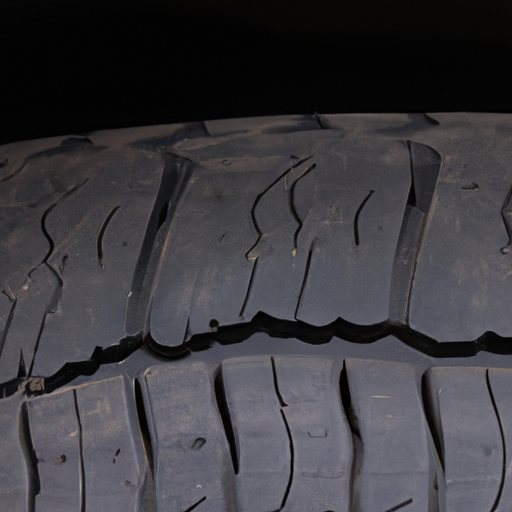Have you ever wondered why your tire seems to be deflating even after you’ve diligently put air into it? It can be quite an inconvenience to constantly battle with a tire that just won’t stay inflated. In this article, we’ll explore some of the common reasons why this could be happening and provide simple solutions to help you keep your tires properly inflated. So, next time you find yourself scratching your head over a mysteriously deflating tire, read on to find out how to fix the issue and get back on the road smoothly.
Table of Contents

Why is My Tire Deflating When I Put Air In It?
If you’ve ever experienced the frustration of inflating your tire only to find it deflating shortly after, you’re not alone. This common issue can be caused by a variety of factors. In this article, we will explore the common causes of tire deflation and provide solutions to help rectify the problem. So, let’s dive in and understand why your tire may be deflating when you put air in it.
Common Causes
Leak in the Tire
One of the most common reasons for tire deflation is a leak. Punctures or cuts on the tire surface, leaking valve stems, bead leaks, and sidewall damage are all potential culprits. Punctures or cuts can occur due to sharp objects on the road, while leaking valve stems can be a result of wear and tear over time. Bead leaks, which occur between the tire and rim, can cause air to escape, and sidewall damage can lead to slow leaks.
Faulty Valve Stem
The valve stem is essential for maintaining proper tire pressure. A corroded or damaged valve stem can result in air leakage. Additionally, a loose valve core or improper installation can cause the valve stem to malfunction, leading to deflation.
Damaged Rim
A damaged rim, such as a bent or cracked rim, can cause air to escape from your tire. Leaking bead seats, which are the areas where the tire meets the rim, can also contribute to deflation. Rust or corrosion on the rim can weaken the seal between the tire and the rim, leading to air loss.
Worn-out Tire
Over time, tires can wear out and become more susceptible to deflation. An over-aged tire may have weakened rubber, making it prone to leaks. Uneven tread wear can also contribute to deflation, as worn-out areas may have thinner rubber that is more prone to punctures. Additionally, if a tire has been previously repaired and the repair was not successful, it can result in deflation.
Incorrect Tire Pressure Gauge
Using an inaccurate tire pressure gauge can lead to over-inflation or under-inflation, both of which can result in tire deflation. An incorrect pressure valve attachment or a malfunctioning gauge can provide inaccurate readings, leading to improper inflation levels.
Fixing the Issue
Now that we have explored the common causes of tire deflation, let’s discuss how to address these issues and prevent further deflation.
Identifying the Source of the Leak
To fix a deflating tire, it is essential to identify the source of the leak. One way to do this is by using a soapy water solution. Apply the solution to the tire surface and look for bubbles forming to pinpoint the area of the leak. Additionally, visually inspecting the tire for any visible punctures, cuts, or sidewall damage can help identify the source. If you’re unsure or unable to locate the leak, seeking professional assistance is recommended.
Repairing or Replacing the Tire
Once you have identified the source of the leak, you can determine whether the tire can be repaired or if it needs to be replaced. For minor punctures or cuts, a patch or plug repair may be sufficient. However, if the damage is extensive or in a critical area, replacing the tire is often the safest option.
Replacing the Valve Stem
If a faulty valve stem is the cause of the tire deflation, it is crucial to replace it. A corroded or damaged valve stem cannot effectively seal the tire, leading to air leakage. Additionally, ensure that the valve core is properly tightened during installation to prevent future issues.
Repairing or Replacing the Rim
In cases where a damaged rim is causing tire deflation, repairing or replacing the rim may be necessary. Bent or cracked rims should be addressed promptly to ensure proper inflation and prevent further damage. It is also essential to check for any rust or corrosion on the rim, as this can compromise the seal between the tire and the rim.
Ensuring Proper Tire Maintenance
To avoid tire deflation in the future, proper tire maintenance is crucial. Here are some tips to keep your tires in optimal condition:
- Regularly check tire pressure using a reliable pressure gauge. This will help you maintain the recommended inflation levels and prevent under or over-inflation, which can cause tire deflation.
- Avoid over-inflation, as excessive air pressure can strain the tire, potentially leading to a blowout or uneven tread wear.
- Inspect your tires on a regular basis for signs of wear, including uneven tread wear, bulges, or cracks. Address any issues promptly.
- Follow a proper tire rotation schedule recommended by your vehicle’s manufacturer. Regular rotation helps maintain even tread wear and extends the lifespan of your tires.
By following these maintenance practices and promptly addressing any issues, you can reduce the risk of tire deflation and ensure optimal performance and safety on the road.
In conclusion, tire deflation can be a frustrating issue, but it can be easily addressed by identifying the source of the leak and taking appropriate measures. By understanding the common causes of tire deflation, such as leaks, faulty valve stems, damaged rims, worn-out tires, and incorrect tire pressure gauges, you can prevent deflation from occurring or quickly resolve the problem. Remember to practice regular tire maintenance to keep your tires in top shape and enjoy a smooth and safe driving experience.

Keep your car tires in peak condition with the right inflator.
Discovering the best tire inflator can be a game-changer for maintaining your vehicle. Explore our comprehensive Ultimate Guide to the Best Tire Inflators to make an informed decision.

